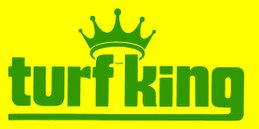Ontario Turfgrass Symposium Summary Day One
One can always learn a thing or two by listening carefully to what seminar speakers have to say. Sometimes it is the same old, same old. Yet those “same olds” are often the important foundations to what we do and how we do what we do. Hearing them again can only serve to reinforce their importance and to remind us of how to improve our lawn care service.
Necrotic ring spot infection often occurs during the spring when the soil is moist, and temperatures are between 10-20 degrees Celsius. Spores or mycelia in the thatch infect the root of susceptible lawn varieties such as Kentucky bluegrass and fine fescues. The symptoms may not appear for 12-18 months later. Those symptoms include sunken, dead or dying patches 4 inches to 2 feet across. Typically there is a green center or frog’s eye.
1. encourage deep rooting by aerating and proper nutrient applications
2. promote growth in the spring and fall, but to reduce summer succulence (soft tissues)
3. overseed with resistant grasses- perennial ryegrasses.
1. Increase the mowing height as this will cause the grass to grow faster
2. increase the mowing frequency.
Since the disease has 2 week latent period, the grass can outgrow the symptoms.
-------------------------------------------------------------------------------------------------------------
Nancy Hudson of the Newfoundland
--------------------------------------------------------------------------------------------------------
Dr Sophie Rochefort of Viridis-Conseil presented information on the use of Endophytic Turfgrasses to control chinch bug . An endophyte is a fungus that lives inside a plant in a symbiotic relationship. The endophyte produces alkaloids that affect insect pest responses.
The second response is antibiosis – here the insect pest feeding and reproduction are affected to such a degree as to reduce damage to the host plant.
Certain perennial ryegrasses have been shown to exhibit endophytic properties.

